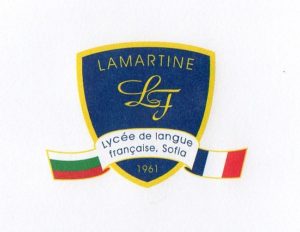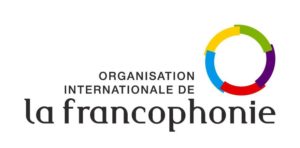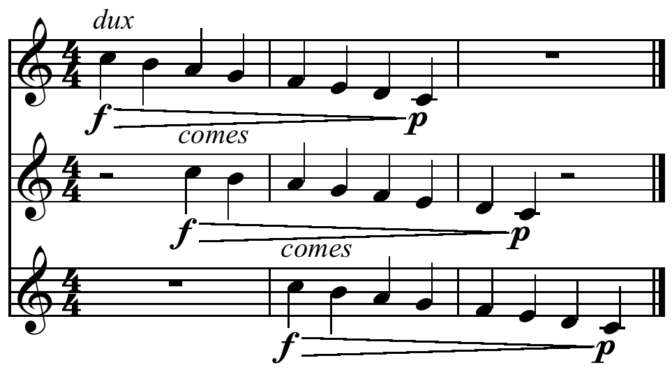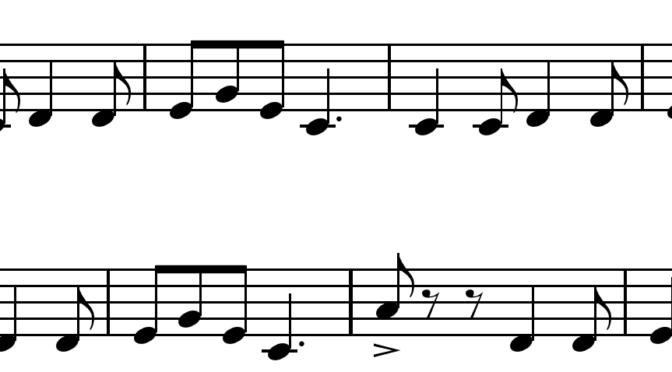5 Ways To Improve Your Playing
We all know that sometimes the melody doesn’t come out right, or your hands just don’t listen to you, or maybe you’re not satisfied with what’s happening with your instrument. Don’t worry, we all have those moments!
But there are some thing you can do to improve your playing.
- To start, let me tell you how important it is to keep your hands in condition. These are the most precious ally that you have! Keep them safe and healthy: take care of both your nails and the skin. As it is for runners to have healthy feet, without any blisters or injuries, it’s the same for musicians and their hands.
- Make time! You need to see your instrument as your best friend. And to best friends we can tell and share everything, we want to see them as often as possible, we sometimes just hang without doing anything seriously. It’s the same with you instrument! Even when you don’t really rehearse, just hang with your instrument, get to know it, figure out how you two work best together. If you know every inch of your instrument, you will be more comfortable with it.
- Practice, practice, practice! This one you know very well. You don’t really need me to tell you this, do you?
- Learn different genres of music. Like, you know, pop, rock, jazz, blues… I know you have heard of them, but have you ever thought about how and why a melody can sound „jazzy“? It’s because the different genres use different scales. So I encourage you to learn different scales and moods and try to improvise. You will be surprised how easy it can be!
- And now that we got to my favorite part, IMPROVISE! Allow yourself to let go of all fear! Don’t be afraid of yourself, or anybody. When you’re alone, just start hitting some random notes, then you’ll start making up a melody. There is no right way to do it. Find your own style!
Timber
Dynamics
An illustration of hairpins in musical notation.
In music, „dynamics“ normally refers to variations of intensity or volume, as may be measured by physicists and audio engineers in decibels or phons. In music notation, however, dynamics are not treated as absolute values, but as relative ones. Because they are usually measured subjectively, there are factors besides amplitude that affect the performance or perception of intensity, such as timbre, vibrato, and articulation.
The conventional indications of dynamics are abbreviations for Italian words like forte (f) for loud and piano (p) for soft. These two basic notations are modified by indications including mezzo piano (mp) for moderately soft (literally „half soft“) and mezzo forte (mf) for moderately loud, sforzando or sforzato (sfz) for a surging or „pushed“ attack, or fortepiano (fp) for a loud attack with a sudden decrease to a soft level. The full span of these markings usually range from a nearly inaudible pianissississimo (pppp) to a loud-as-possible fortissississimo (ffff).
Greater extremes of pppppp and fffff and nuances such as p+ or più piano are sometimes found. Other systems of indicating volume are also used in both notation and analysis: dB (decibels), numerical scales, colored or different sized notes, words in languages other than Italian, and symbols such as those for progressively increasing volume (crescendo) or decreasing volume (decrescendo), often called „hairpins“ when indicated with diverging or converging lines as shown in the graphic above.
Articulation
Articulation is the way the performer sounds notes. For example, staccato is the shortening of duration compared to the written note value, legato performs the notes in a smoothly joined sequence with no separation. Articulation is often described rather than quantified, therefore there is room to interpret how to execute precisely each articulation.
For example, staccato is often referred to as „separated“ or „detached“ rather than having a defined or numbered amount by which to reduce the notated duration. Violin players use a variety of techniques to perform different qualities of staccato. The manner in which a performer decides to execute a given articulation is usually based on the context of the piece or phrase, but many articulation symbols and verbal instructions depend on the instrument and musical period (e.g. viol, wind; classical, baroque; etc.).
There are a set of articulations that most instruments and voices perform in common. They are—from long to short: legato (smooth, connected); tenuto (pressed or played to full notated duration); marcato (accented and detached); staccato („separated“, „detached“); martelé (heavily accented or „hammered“). Many of these can be combined to create certain „in-between“ articulations. For example, portato is the combination of tenuto and staccato. Some instruments have unique methods by which to produce sounds, such as spicatto for bowed strings, where the bow bounces off the string.
Chords and harmony
Chords
A chord, in music, is any harmonic set of three or more notes that is heard as if sounding simultaneously. These need not actually be played together: arpeggios and broken chords may, for many practical and theoretical purposes, constitute chords. Chords and sequences of chords are frequently used in modern Western, West African, and Oceanian music, whereas they are absent from the music of many other parts of the world.
The most frequently encountered chords are triads, so called because they consist of three distinct notes: further notes may be added to give seventh chords, extended chords, or added tone chords. The most common chords are the major and minor triads and then the augmented and diminished triads. The descriptions major, minor, augmented, and diminished are sometimes referred to collectively as chordal quality. Chords are also commonly classed by their root note—so, for instance, the chord C major may be described as a triad of major quality built on the note C. Chords may also be classified by inversion, the order in which the notes are stacked.
A series of chords is called a chord progression. Although any chord may in principle be followed by any other chord, certain patterns of chords have been accepted as establishing key in common-practice harmony. To describe this, chords are numbered, using Roman numerals (upward from the key-note), per its diatonic function. Common ways of notating or representing chords in western music other than conventional staff notation include Roman numerals, figured bass (much used in the Baroque era), macro symbols (sometimes used in modern musicology), and various systems of chord charts typically found in the lead sheets used in popular music to lay out the sequence of chords so that the musician may play accompaniment chords or improvise a solo.
Harmony
Barbershop quartets, such as this US Navy group, sing 4-part pieces, made up of a melody line (normally the second-highest voice, called the „lead“) and 3 harmony parts.
In music, harmony is the use of simultaneous pitches (tones, notes), or chords. The study of harmony involves chords and their construction and chord progressions and the principles of connection that govern them. Harmony is often said to refer to the „vertical“ aspect of music, as distinguished from melodic line, or the „horizontal“ aspect. Counterpoint, which refers to the interweaving of melodic lines, and polyphony, which refers to the relationship of separate independent voices, are thus sometimes distinguished from harmony.
In popular and jazz harmony, chords are named by their root plus various terms and characters indicating their qualities. For example, a lead sheet may indicate chords such as C major, D minor, and G dominant seventh. In many types of music, notably Baroque, Romantic, modern, and jazz, chords are often augmented with „tensions“. A tension is an additional chord member that creates a relatively dissonant interval in relation to the bass. Typically, in the classical common practice period a dissonant chord (chord with tension) „resolves“ to a consonant chord. Harmonization usually sounds pleasant to the ear when there is a balance between the consonant and dissonant sounds. In simple words, that occurs when there is a balance between „tense“ and „relaxed“ moments.
Моята гимназия
 Моята гимназия
Моята гимназия
При създаването си
през 1961 г. френската гимназия се помещава в квартал „Надежда“. За учебната 1963 г. се
настанява в настоящата си сграда на булевард „Патриарх Евтимий“ в центъра на София, в
сградата на 9-та политехническа гимназия. Последният випуск на политехническата гимназия завършва през 1965 г. и гимназията остава 9-та Френска езикова. От 1977 г. се откриват и паралелки с испански език, които през 1991 г. са преместени в новосъздадената 164-та
испанска езикова гимназия „Мигел де Сервантес“.
През 1976 г. Френската гимназия е наградена с орден „Кирил и Методий“ I степен, а през 1977 г. е определена за асоциирано училище към ЮНЕСКО. При историческата си визита в България през 1989 г. президентът на Франция Франсоа Митеран специално посещава Френската гимназия, където
интересните и непринудени разговори с учениците и учителите го задържат повече от предвиденото по протокола време. От началото на 90-те години гимназията носи името на
френския благородник, поет, дипломат и политик Алфонс дьо Ламартин (1790-1869), който е
пребивавал в България през 1832 г.
Френската гимназия владее
утвърдени традиции и успешно въз
действие в обучението по френски език. Интензивното
изучаване на езика се извършва по програма, включваща 20 часа по френски седмично в 8-ми клас и от 6 до 8 часа в класовете след 8-ми. Предметите история, география, биология и химия, се изучават и на френски език. През петте години на обучение се овладява задълбочено и хронологично френската литература и култура в различни нейни жанрове.

Девизът на училището „Френската – защото сме заедно!“ е декларация на единство. В половинвековното развитие на
гимназията се утвърждава приемствеността – много преподаватели и сподвижници са и нейни
възпитаници и така паметта за миналото става и завет към бъдещето. В годините след основаването на гимназията до френският език по популярност се нареждат и другите западни езици. Влизането във „Френската“ винаги остава трудно — ежегодно балът е съизмерим с този в останалите елитни столични гимназии. Това обяснява, че стимулът за кандидатстване в голяма степен се дължи на заслуженото уважение към гимназията и на завещаната вяра в нея от редица поколения. Френската гимназия има своя атмосфера, способстваща изграждането на идентичността на младите хора и опознаването от тях на националната и световна история, на обществените стойности и потребности.
International Francophonie Day

Every year March 20 is International Francophonie Day, that is celebrated by 77 countries of the world.
The holiday celebrates the French language and Francophone culture, that is why annually around 200 million French speakers on Earth observe the day. The holiday commemorates the signing of the Niamey Convention in Niger on March 20, 1970. According to the document, the Agence de Coopération Culturelle et Technique, the precursor to the International Organization of La Francophonie, was established.
56 countries of the world are the members of the International Organization of La Francophonie and 14 others have status of observers. Any country, that wants to enter the organization, should not only prove that its citizens speak French. The country also should have historic and cultural relations with France.
There is another holiday that coincides with International Francophonie Day. It is French Language Day, that was established by UNESCO in 2010. This holiday was created to celebrate multilingualism and promote equal use of all six official working languages throughout the organization.
Happy International Woman’s day!

Програма на 12 Д клас за 06.03.2018
От днес
навлизаме активно в учебната работа през м. март.
| Програма на 12 Д клас за 06.03.2018 | |
| Час | Предмети |
| 1 | Френски език |
| 2 | Френски език |
| 3 | Свят и личност |
| 4 | Свят и личност |
| 5 | Информ. технологии |
| 6 | Информ. технологии |
| 7 | География и икономика |
| 8 | География и икономика |
| Програма на 12 Д клас за 07.03.2018 | |
| Час | Предмети |
| 1 | Български език и литература |
| 2 | Български език и литература |
| 3 | ФВС |
| 4 | ФВС |
| 5 | Информ. технологии |
| 6 | Информ. технологии |
| 7 | Час на класа |
| Програма на 12 Д клас за 08.03.2018 | |
| Час | Предмети |
| 1 | Испански език |
| 2 | Испански език |
| 3 | Математика |
| 4 | Математика |
| 5 | История |
| 6 | История |
| 7 | Френски език |
| 8 | Френски език |
| Програма на 12 Д клас за 09.03.2018 | |
| Час | Предмети |
| 1 | Испански език |
| 2 | Испански език |
| 3 | Математика |
| 4 | Математика |
| 5 | Български език и литература |
| 6 | Български език и литература |
Честит 1ви Март!
Честит 1ви Март!
Improvising
Improvisation. It may seem as the hardest thing to do. Many people are afraid to do something wrong, to hit a bad note. I know, I’ve had the same problem. Improvisation is a choice, it may be a way of life. But I’m not here to tell you how to live your life; I’ll only teach you the simplest thing.
There are many ways one can improvise: you could just hit random notes and see what works, you could try to learn music theory, or you could try a bit of both. That’s what I do and that’s what I intend to teach you.
Let’s think of it as a game with numbers. Now, keep an open mind, this is no rocket science. If you want to learn how to improvise, I assume you already know how to play an instrument and you know the notes. Therefore, you probably know to play different scales in different keys. Have you ever wondered why in the key of G major we hit the note F# instead of F? Let me explain it: every major scale has two specific places where the interval is a half note. Here is when the game begins.
Let me tell you the rules. First, we choose a key, let’s choose an easy one: C major. After that we give each note in scale a number: C is number 1; D is equal to 2; E=3; F=4; G=5; A=6; B=7 and the number 1 is equal to 8 which is C note. You may have noticed that on the piano (it’s the same on almost every instrument, but the piano is most convenient) that between the notes E and F and then B and C there is no black key. That’s because the intervals between those notes is a half tone. Imagine the intervals as steps: between step 1 and step 2 there is a big (hole) step, then to get to 3 you have to climb another big step. After that to get from 3 to 4 you have to climb a small (half) step, then to get to 5 you take another big step, then you do the same for 6 and 7, but to get from 7 to 8 you take again a small step. And that’s it. You can step on all these steps, but you have to watch out for the other half steps that aren’t in the scale, as you have them everywhere.
After you’ve understood the rules, you can hit all those notes and make up a melody as you go on playing.





